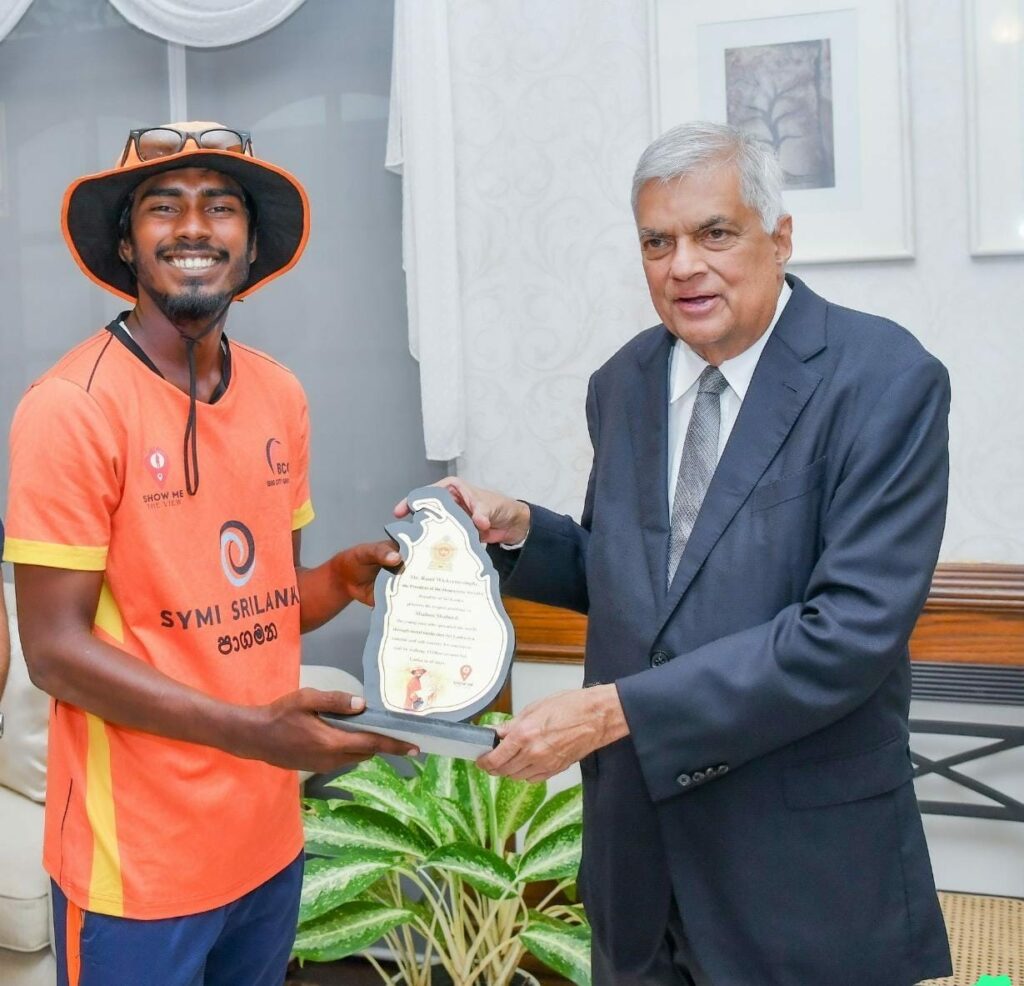Bullying, ragging, intimidation, are acceptable news stories in our morning papers. As a predominantly religious and moral society, where non violence is more than a philosophy, where a large number of people are vegetarian and abstain from alcohol, where religions are interchangeable and festivals celebrated by all, how have we come to that place where, we look on as a man drowns, trying to run away from a brutal stick wielding mob?
In the most recent case to be publicized, a student from the Peradeniya University, who was hospitalized after a particularly brutal ragging experience at the hands of 13 seniors, Needed to have the protection of authorities in order to go back and finish his degree.
Ragging is part and parcel of the university experience in Asian countries such as India, Nepal and Sri Lanka. On the milder end, it involves mild coercion; forcing freshers to sing out loud etc, and on a more serious level involves assault, criminal intimidation and in some instances dehumanized sexual abuse and sometimes murder.
Conversations with graduates of local universities around the country makes ragging seem rather benign. One graduate from the Sabaragamuwa University couldn’t stop giggling while relaying the stories he had accumulated over his three year tenure. Stories of fake weddings, forced skinny dipping, playful trickery etc seem to form his opinion on ragging. The rag lasted approximately two weeks and afterwards, he admits there was camaraderie amongst the freshers and seniors, and he himself took part in the same system when it came his time to orient a new batch of freshers.
A graduate from the Eastern University relayed an event where she was forced to stay kneeling for a long period of time. She seemed to accept it as par of the course. She wasn’t wrong. To complain, or grumble, or refuse participation in these ‘orientation’ programmes, by all accounts, would ensure that you get singled out for worse treatment. The graduates all agree that being from a leading national school such as Visakha or Ananda College would have meant worse treatment, just for that fact. If freshers tried to set themselves apart from their fellow students, by actions, dress, language etc, they were picked upon, until they were ‘cut-down to size’.
The barbaric and often sadistic rituals that have catapulted the issue of ragging in to the public spotlight, have inflicted large scale mental and emotional trauma and often left victims in a weakened and deteriorated physical state as well. Far from building fellowship amongst seniors and juniors on campus, as it is supposed to, it has managed to intimidate, alienate and scare away students.
Children in Sri Lanka are for the most part, sheltered and pampered at homes, taken care of, fed and dressed and educated. These same children then work hard get one of the few thousands spaces in universities and then are subjected to eating out of the garbage, eating rice with sand or sea water, kneeling for long periods, swallowing fish bones, getting naked in public etc. As a result many students choose never to go back to university. Taking their chances, instead, in the work force or doing a private course at a CIMA or CIM institute or end up spending vast sums of money to go abroad.
“These people have no place in Universities. They don’t deserve a university education” Minister of Higher Education Wishva Warnapala said, speaking of the instigators of violence in universities. He mentioned one event that has been brought to his attention of a student who was forced to drink water out of the toilet, and who was vomiting consistently with such intensity that he was hospitalized (and has since been discharged). “I was an undergraduate in the 60s” minister Warnapala told the DM, “apart from a few good natured pranks against the kultoors (cultured) from the bigger schools, we never experienced or indulged in such inhumane acts as we see happening today” he said.
Speaking of the most recent event to be reported from the Peradeniya University of a student who had identified 14 assailants, minister Waranapala spoke out against the students unions that have the backing of a prominent leftist political party. “When we were bringing in the anti ragging act to parliament, everyone, even the opposition UNP voted for it, because everyone understood it to be a problem hindering the education of students. Everyone voted for it. Except the one member of the JVP Nihal Galapathi” the Minister said. It’s another way to get their hooks (“kokka gahanawa”) in to the young people from universities he said, either you are with them, or against them. Being against them, allows one to be a victim of acts of retribution.
The minister’s view may sound rather dystopian. However Acting Assistant Dean of the Peradeniya University Professor Anura Wickremasinghe seems to agree. He said that when he was in university “Ragging was actually an orientation process and was fun. It built fellowship and we never took it to extremes – now it’s a different story.”
The students accused came forward and handed themselves over to police early October and were produced in front of the Kandy magistrate on the 27th. The victim however cited medical reasons and did not show; hence the suspects are back in remand pending a hearing. Professor Wickremasinghe also mentioned that there is a distinct lull in campus ever since the 14 students were taken in to custody. “The student, who came forward, is very brave. Not only did he identify his assailants. He’s also coming back to finish his degree” he said. He also mentioned that the university administration is according every possible protection for the student, who comes directly under the purview of the Dean of the Peradeniya University Dr. Anoma Abeyrathne. DM wasn’t granted access to speak to the victim for fear of backlash against him, since he may be identified by the raggers or their friends.
University administrations wring their hands in despair. There isn’t a lot they can do. “The ‘raggers’ are often part of student organizations that have the powerful backing of the JVP”, an insider who didn’t wish to be named told the DM. Victims who come forward to identify their assailants run the risk of instant and exceptionally brutal retribution. “These students just want to be left alone to do their studies and finish their degrees” he said.
He also mentioned that rigorous punishment won’t work to solve this problem. He said that these students need intense psychological counselling that allows them to function in normal society as normal human beings.
Minister Warnapala takes an entirely different view. He says in Indian Campuses, they’ve installed CCTV to protect their students and have placed guards at gates to prevent known instigators from entering campus premises. He says while some of these methods such as the installation of guards aren’t practical in Sri Lankan campuses such as at Peradeniya, despite the expense, CCTV could be mounted at known hubs of campus ragging such as the canteens.
Ragging is a criminalized offence in Sri Lanka. Under the Anti Ragging act of 1998, students found to be guilty are to be punished under civil law, and is not under the mercy and purview of the university administrations. Police have been instructed to enter campuses to break up violent demonstrations and to arrest raggers without the permission of the university administration.
They could be given prison sentences that range from 6 months to 1 year and will not be accepted back in to complete their degrees. Minister Warnapala calls it ‘terrorism’ and says that “no decent society can condone and tolerate these offenses” and plans to take a zero tolerance policy towards those that are found guilty.
For their part the so called JVP influenced students unions call all the attention ragging gets, ‘government influenced media hype’. President of the Students Union of the Kelaniya University Anuja Kahandawarachchi calls it government propaganda to discredit the free university system. He mentioned that the government was looking to portray students from the state universities as vagrants and trouble makers in order to destroy public opinion. “There may have been ‘ragging’ in the 80s. Today there isn’t any of that. We have fresher orientation. That is all. We’re trying to create fellowship amongst the students” he said.
To add to that Students Union president of the Peradeniya University, Sandya Bandara, denies allegations of JVP puppeteering. He blanket refutes all claims alleging that students was made to eat rice with sand and fish bones, and reiterates Mr. Kahandawarachchi’s claims that these are all part of a government plot to discredit the student body. He says that it is the government’s intention to introduce privatization of the universities through the portrayal of the ‘apparent’ gradual downfall of the free university system. When asked about the reason for the existence of a pan university Anti Raggers association if indeed there was ‘no such thing as ragging’, Mr. Bandara says that the Anti Raggers are made up of students who don’t participate in the university sub culture. He suggested that they set themselves apart from the rest of the students, and that they consider themselves the elites. Mr. Bandara added that they were by far the minority.
Professor Wickremasinghe suggests a more worrying dilemma. He says that with the existence of a Students Union as well as an Anti Raggers Association, the student body is polarized. He says that each group’s actions are a direct and immediate response to the other group’s actions. Therefore incidents take on a graver and more serious nature. He says that instead of two units, the student body needs to act as one in order to address the issues that they are facing at the moment.
However, despite Professor Wickremasinghe’s optimism with regard to the unification of the student body, to an objective outsider, it doesn’t seem possible.
As long as student representatives deny the existence of its ‘issues’ then the risk is larger that the government or more worryingly the public will turn away from its cause. As long as it continues to hide the brutal perpetrators of sadistic violence under the guise of ‘orientation’ the problem will continue to grow larger in to a full scale class war, until not even they will be able to ignore it anymore.
Post Disclaimer | Support Us
Support Us
The sailanmuslim.com web site entirely supported by individual donors and well wishers. If you regularly visit this site and wish to show your appreciation, or if you wish to see further development of sailanmuslim.com, please donate us
IMPORTANT : All content hosted on sailanmuslim.com is solely for non-commercial purposes and with the permission of original copyright holders. Any other use of the hosted content, such as for financial gain, requires express approval from the copyright owners.
 Sri lanka Muslims Web Portal Sri Lanka Muslims News Center
Sri lanka Muslims Web Portal Sri Lanka Muslims News Center
 Donate
Donate



I do agree..
During the 4 year period I was at the uni, there had been 2 murders. One from the anti-raggers and the other from Pro-raggers. First one is a brutal murder and the second one is a self defence ended up killing a Pro-Ragger.
I was been active on Anti-Ragging and hence had several discussions with the student council regarding this issue of ragging junior batch mates. One thing skip the radar of the authorities is these Pro-raggers are backed by politicians. Sometimes the lectures too do get involve. The bad part it some of my batch mates had to face the consequences of opposing ragging on compromising their subject grades. The lectures discriminate students based on the group they represent.
What is more shocking is though the world outside see this an inhuman way of breaking the ice between the juniors and seniors, the students in the uni aren’t in line with such thoughts.
Eg: Once when the anti-raggers tried to save bunch of 10 students from Ragging, 7 came out and ask them to back off. They publicly claim that they want to be “Ragged”. For a second this made us questioned our sanity on fighting ragging for 70% of student population which one way or the other liked to be ragged.
Coming from a local university I am pretty much sure political interventions of stopping raging will not help. This has to come from the students. Especially those who rag, and liked to be ragged. Talking with authorities will not make much deference since these are the authorities support the Raggers. Two vice-chancellors who opposed ragging at the university I represent were sent home humiliated.
Each university has it’s own social structure. But what no one understands is the root cause of ragging has many other hidden agendas. Unless this is treated at root cause level, I pretty much doubt anyone can do anything.